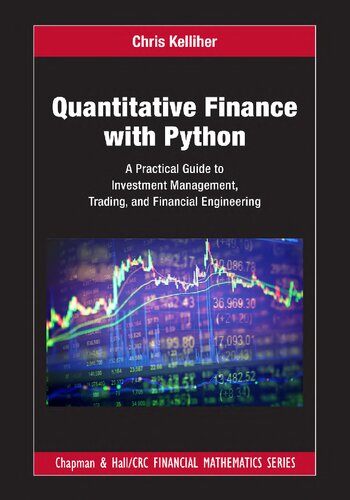C H A P T E R 1 Setting the Stage: Quant Landscape 1.1 INTRODUCTION Quantitative finance and investment management are broad fields that are still evolving rapidly. Technological and modeling innovations over the last decades have led to a series of fundamental shifts in the industry that are likely just beginning. This creates challenges and opportunities for aspiring quants who are, for example, able to harness the new data sources, apply new machine learning techniques or lever- age cutting edge derivative models. The landscape of these fields is also fairly broad, ranging from solving investment problems related to optimal retirement outcomes for investors to providing value to firms by helping them hedge certain undesirable exposures. In spite of the innovations, however, quants must remember that models are by definition approximations of the world. As George Box famously said “All Models are Wrong, Some are Useful”, and this is something all quants should take to heart. When applying a model, the knowledge of its strengths, weaknesses and limitations must be at the forefront of our mind. Exacerbating this phenomenon is the fact that finance, unlike hard sciences like Physics or Chemistry, does not allow for repeatable experiments. In fact, in finance we don’t even know for sure that consecutive exper- iments come from the same underlying distribution because of the possibility of a regime change. Making this even more challenging is the potential feedback loop cre- ated by the presence of human behavior and psychology in the market. This is a key differentiating factor relative to other, harder, sciences. As a result, quants should aim to make models that are parsimonious and only as complex as the situation requires, and to be aware and transparent about the limitations and assumptions1.
چکیده فارسی
C H A P T E R 1 تنظیم مرحله: Quant Landscape 1.1 مقدمه مدیریت مالی و سرمایه گذاری کمی حوزه های گسترده ای هستند که هنوز به سرعت در حال تکامل هستند. نوآوریهای فناوری و مدلسازی در دهههای گذشته منجر به یک سری تغییرات اساسی در صنعت شده است که احتمالاً تازه شروع شدهاند. این چالشها و فرصتهایی را برای کمیتهای مشتاق ایجاد میکند که بهعنوان مثال، میتوانند از منابع داده جدید استفاده کنند، تکنیکهای جدید یادگیری ماشین را به کار ببرند یا از مدلهای مشتق پیشرفته استفاده کنند. چشمانداز این حوزهها نیز نسبتاً گسترده است، از حل مشکلات سرمایهگذاری مرتبط با نتایج بهینه بازنشستگی برای سرمایهگذاران تا ارائه ارزش به شرکتها از طریق کمک به آنها برای محافظت از مواجهههای نامطلوب خاص. با وجود ابداعات، کوانت ها باید به خاطر داشته باشند که مدل ها طبق تعریف تقریبی از جهان هستند. همانطور که جرج باکس به قول معروف «همه مدلها اشتباه هستند، برخی مفید هستند»، و این چیزی است که همه چیز باید به آن توجه داشته باشد. هنگام به کارگیری یک مدل، شناخت نقاط قوت، ضعف و محدودیت های آن باید سرلوحه ذهن ما باشد. تشدید این پدیده این واقعیت است که امور مالی، بر خلاف علوم سخت مانند فیزیک یا شیمی، اجازه آزمایش های تکراری را نمی دهد. در واقع، در امور مالی، ما حتی نمیدانیم که آزمایشهای متوالی از یک توزیع اساسی ناشی میشوند، زیرا امکان تغییر رژیم وجود دارد. چالش برانگیزتر کردن این موضوع، حلقه بازخورد بالقوه ای است که با حضور رفتار و روانشناسی انسانی در بازار ایجاد می شود. این یک عامل کلیدی تمایز نسبت به سایر علوم سخت تر است. در نتیجه، کوانتها باید به دنبال ساخت مدلهایی باشند که صرفهجویی و فقط به اندازهای که شرایط پیچیده باشد، و از محدودیتها و مفروضات آگاه و شفاف باشند.
ادامه ...
بستن ...
Author(s): C. Kelliher
Year: 2022
ISBN: 2021056941,2021056942,9781032014432,9781032019147,9781003180975
ادامه ...
بستن ...










